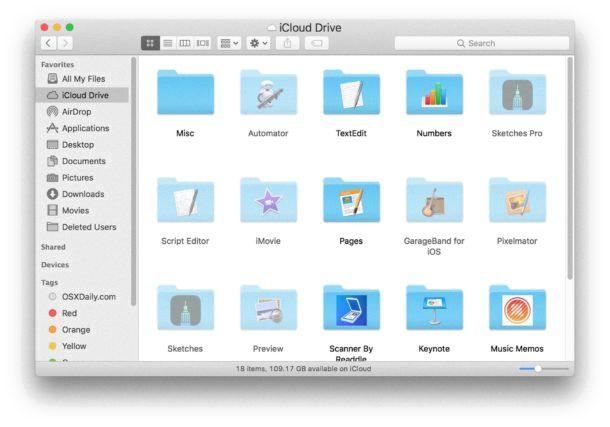ICloud is a cloud storage and cloud computing service provided by Apple Inc. It allows users to store data such as photos, videos, documents, and more, and access them from any Apple device. However, sometimes users may encounter issues with uploading files to iCloud. In this article, we will explore the possible reasons behind the iCloud file upload failure and provide solutions to fix the problem.
One of the first things to check when experiencing iCloud file upload issues is your internet connection. iCloud relies on a stable and reliable network connection to sync and upload files. If your internet connection is slow or unreliable, iCloud may refuse to upload your files. Ensure that your Wi-Fi is working properly and that you have a stable internet connection before attempting to upload files to iCloud.
Another common cause of file upload failure is an incorrect or incompatible filename. Different operating systems have different rules for filenames, and some may not accept special characters like &, !, or #, while others may not allow white spaces within a filename. Make sure that your filenames adhere to the guidelines of the operating systems you are using. Renaming the file with a simpler and compatible filename may help resolve the upload issue.
Insufficient iCloud storage and disk space can also prevent files from being uploaded to iCloud. iCloud offers a limited amount of free storage, and if you have exceeded your storage limit, you will need to either free up space or upgrade to a higher storage plan. To check your iCloud storage, go to Settings on your Apple device, tap on your Apple ID, and select iCloud. From there, you can see how much storage you have used and manage your storage by deleting unnecessary files or upgrading your storage plan.
Enabling the “Optimize Mac Storage” feature can also help resolve iCloud file upload issues. This feature allows your Mac to automatically optimize storage by keeping smaller, more frequently accessed files on your device while storing larger, less frequently accessed files in iCloud. By enabling this feature, you can free up space on your Mac and potentially resolve any upload issues caused by insufficient disk space.
If none of the above solutions work, you can try manually uploading the files to iCloud Drive. To do this, open Finder on your Mac, navigate to the iCloud section, and select iCloud Drive. From there, you can drag and drop the files or personal documents into the Documents folder. This bypasses any potential synchronization issues and allows you to directly upload the files to iCloud.
ICloud file upload failure can be caused by various factors such as internet connection issues, incorrect filenames, insufficient iCloud storage, or lack of disk space. By ensuring a stable internet connection, using compatible filenames, managing iCloud storage, and enabling the optimize feature, you can troubleshoot and resolve the iCloud file upload problem. Remember to always check for any updates or changes in your iCloud settings that may affect file uploads and make sure to keep your device and iCloud storage well-managed.
Why Won’t iCloud Let You Upload Files?
There could be several reasons why iCloud is not allowing you to upload files. Here are some possible causes and solutions:
1. Insufficient storage: If your iCloud storage is full, you won’t be able to upload any additional files. To check your storage status, go to Settings on your iOS device, then tap on your name > iCloud > Manage Storage. If your storage is full, you can either delete unnecessary files or purchase additional storage from Apple.
2. File size limitations: iCloud has limitations on the size of files that can be uploaded. For example, photos and videos larger than 15GB cannot be uploaded to iCloud. Make sure the files you are trying to upload are within the allowed size limits.
3. Slow or unstable internet connection: If your internet connection is slow or unstable, iCloud may have difficulty uploading files. Make sure you have a strong and stable internet connection before attempting to upload files. You can also try restarting your router or connecting to a different network.
4. iCloud service outage: Sometimes, iCloud services may experience temporary outages or maintenance periods. You can check the status of iCloud services by visiting Apple’s System Status page (https://www.apple.com/support/systemstatus/). If there is an ongoing issue, you may need to wait for it to be resolved.
5. Software or device compatibility issues: Ensure that your device’s software is up to date and compatible with iCloud. Check for any available software updates and install them if necessary. Additionally, make sure you are using a supported device that meets iCloud’s system requirements.
If none of these solutions resolve the issue, you may need to contact Apple Support for further assistance. They can provide more specific guidance based on your device and situation.

How Do You Force iCloud to Upload Files?
To force iCloud to upload files, you can follow these steps:
1. Open the “Finder” application on your Mac.
2. In the left sidebar, click on “iCloud Drive” under the “Favorites” section.
3. Once you are in the iCloud Drive, navigate to the “Documents” folder.
4. Now, locate the files or personal documents that you want to upload to iCloud.
5. You can either select individual files or drag and drop multiple files into the “Documents” folder.
6. As you drop the files, iCloud will start uploading them to your account.
7. Depending on the file size and your internet connection, the upload process might take some time. Make sure you have a stable internet connection to avoid interruptions.
8. You can monitor the upload progress in the iCloud status menu located in the top-right corner of your screen.
9. Once the upload is complete, the files will be available on all your devices connected to the same iCloud account.
Alternatively, if you have limited storage space in your iCloud account, you may need to reduce the amount of data stored in iCloud to make room for new uploads. You can do this by deleting unnecessary files or enabling the “Optimize Mac Storage” feature, which automatically stores older files in iCloud to free up local storage.
By following these steps, you can force iCloud to upload your files and ensure they are accessible across all your devices.
Why Aren’t Your Documents Uploading?
There can be several reasons why your documents are not uploading. Here are some possible explanations:
1. Incorrect file format: Ensure that you are uploading files in a supported format. Different platforms and systems have different requirements. Common file formats include .docx, .pdf, .jpeg, .png, etc. Check the upload instructions or contact the platform’s support for specific file format requirements.
2. File size limitations: Some platforms impose restrictions on the size of files that can be uploaded. If your document exceeds the maximum file size allowed, you will encounter upload failures. Try compressing the file or splitting it into smaller parts if possible.
3. Slow internet connection: Uploading large files can be time-consuming, especially if you have a slow internet connection. Check your internet speed and consider using a faster connection if possible. Alternatively, you can try uploading the files during non-peak hours when the internet traffic is lower.
4. Filename issues: Make sure that your file’s name does not contain any special characters, such as &, !, #, or any other symbols that might be incompatible with the platform or operating system. Additionally, avoid using spaces within file names, as some systems may not handle them correctly. Stick to alphanumeric characters and underscores to ensure compatibility.
5. Browser compatibility: Sometimes, the browser you are using may not be fully compatible with the uploading process. Try using a different browser or updating your current one to the latest version. Additionally, clear your browser cache and cookies, as they can sometimes interfere with file uploads.
6. Server issues: It’s possible that the platform’s server is experiencing technical difficulties, which can cause upload failures. In such cases, you can try again later or contact the platform’s support for assistance.
7. File permissions: Check the file permissions on your computer. If the document you are trying to upload has restricted access permissions, it may prevent the upload from being successful. Make sure you have the necessary permissions to access and upload the file.
If none of these solutions resolve the issue, it is recommended to reach out to the platform’s support team for further assistance. They will be able to provide specific guidance based on their platform’s requirements and any known issues.
Why is Your Mac Not Uploading Files to iCloud?
There could be several reasons why your Mac is not uploading files to iCloud. One possible reason is that you do not have enough iCloud storage space available. iCloud provides a limited amount of free storage, and if you have exceeded this limit, you will need to upgrade your storage plan in order to continue uploading files to iCloud.
Another possible reason could be that there is a problem with your internet connection. In order to upload files to iCloud, you need a stable and reliable internet connection. If your internet connection is slow or unstable, it may prevent your Mac from uploading files to iCloud.
Additionally, if you have disabled iCloud Drive on your Mac, it will not be able to sync and upload files to iCloud. To check if iCloud Drive is enabled, go to System Preferences, click on iCloud, and make sure the iCloud Drive option is checked.
It is also worth noting that certain file types may not be supported by iCloud. For example, files larger than 50 GB cannot be uploaded to iCloud. Additionally, some file types, such as system files or files that are currently open or in use by other applications, may not be eligible for upload to iCloud.
Possible reasons why your Mac is not uploading files to iCloud:
1. Insufficient iCloud storage space
2. Problems with your internet connection
3. iCloud Drive is disabled on your Mac
4. Unsupported file types
5. File size limitations
To resolve the issue, consider the following steps:
1. Check your iCloud storage space and upgrade if necessary.
2. Ensure that your internet connection is stable and reliable.
3. Make sure iCloud Drive is enabled on your Mac.
4. Verify that the file types you are trying to upload are supported by iCloud.
5. Check the file size of the files you are trying to upload and ensure they are within the allowed limits.
By addressing these possible issues, you should be able to determine why your Mac is not uploading files to iCloud and take the necessary steps to resolve the problem.
Conclusion
ICloud is a powerful cloud storage service provided by Apple that allows users to store and sync their files across multiple devices. However, there are a few common issues that users may encounter when using iCloud, such as photos not loading or files not syncing.
One of the main reasons for photos not loading in iCloud is a poor internet connection. It is important to ensure that your network connection is stable and reliable to avoid any issues with iCloud. Additionally, checking if there is enough iCloud storage and disk space is crucial. If there is insufficient storage space, iCloud may fail to back up data on your Mac.
If you are experiencing issues with file uploads, it is possible that the filename is incorrect or incompatible across different systems. Ensure that your filenames do not contain special characters or white spaces, as some operating systems may not accept them.
To resolve these issues, you can try dragging and dropping files or personal documents in Finder’s iCloud section, specifically in the iCloud Drive > Documents folder. Additionally, reducing the amount of data stored in iCloud and enabling the optimize feature can help create sufficient space for syncing and backing up files.
ICloud is a convenient and reliable cloud storage service, but it is important to ensure a stable internet connection, sufficient storage space, and compatible filenames to avoid any issues with file syncing and backups.








